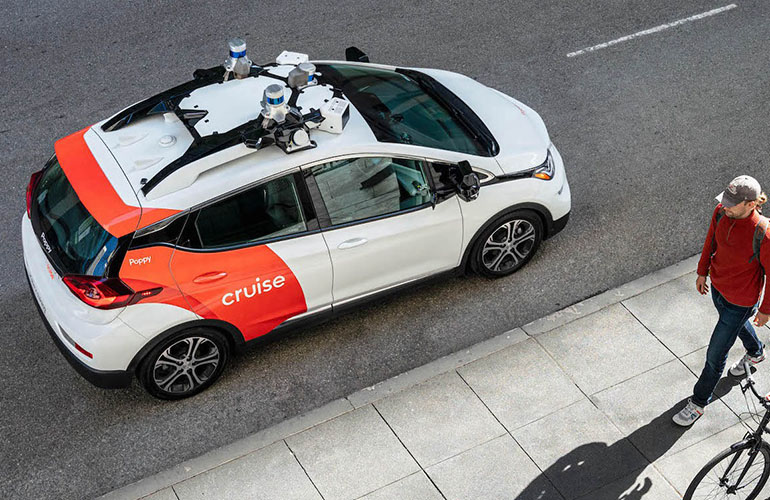|
Listen to this article  |

Cruise has deployed robotaxis, or plans to deploy robotaxis, in San Francisco, Phoenix and Austin. | Source: Cruise
Cruise recently released its safety report to give the public insights on what the company does to ensure its robotaxis are safe. The report details the approaches, tenets and processes that help keep Cruise vehicles safe on the road.
Cruise’s vehicles have driven nearly five million miles, and 500,000 driverless miles without any major incidents. The company aims to deploy the world’s most advanced driverless service, and identify, classify and mitigate the safety risks that come with operating a driverless service.
Cruise has many safeguards in place to ensure its robotaxi services are safe, including a company-wide Safety Management System (SMS), that helps to encourage a culture of safety within the company by giving employees a route for reporting safety concerns, and an Independent Safety Review Board made up of experts in autonomous driving from outside of the company. The Board is made up of Azad Madni, Carol Flannagan, Charles Justiz and Christopher Hart.
The SMS helps to ensure Cruise is making safe decisions throughout product development and driverless operations. This framework is also used in the aviation, nuclear energy and oil and gas industries to ensure safe operations. Cruise’s SMS has four core pillars, which are safety policy, safety risk management, safety assurance and safety promotion.
But Cruise’s dedication to safety goes back further than the systems it has in place now, and starts with a build-up approach, also called envelope expansion, that it has taken when rolling out its services. The approach, which is common in other safety-critical fields like aerospace or medical devices, involves Cruise starting with lower-risk conditions and then expanding to higher-risk ones as the company hits more performance targets.
Recently, Cruise has been expanding its robotaxi services, branching off from where it first started tests in San Francisco and started deploying robotaxis in Phoenix and Austin. These services are rolled out from Cruise in two phases: a Supervised Release Process and a Driverless Release Process. During both of these phases, Cruise’s engineers are performing simulations tests, operability tests, on-road tests, closed-course tests and decisions meetings and approvals.
During the first phase, autonomous vehicles are deployed with an autonomous vehicle test operator behind the wheel to take control if anything goes wrong. These supervised releases give Cruise’s engineers crucial information about how their technology is performing in the real world. Cruise works to mature the code behind the vehicles during this phase until it’s ready to move on to a driverless release.
The Driverless Release Process involves taking the operator out of the vehicle and letting the robotaxi drive itself. Usually these deployments start with limitations in operational hours and a smaller map than was used in the first phase, but these limitations can shrink over time as the robtoaxis’ abilities grow.
Waymo, one of Cruise’s biggest competitors in the autonomous driving space, has also released its safety benchmarks for its robotaxis. Waymo released its Response Time paper and Collision Avoidance Benchmarking paper to provide more clarity on the safety benchmarks it holds for its vehicles. The papers outline how the Waymo Driver compares to average human drivers and better than average drivers.
Credit: Source link


Comments are closed.